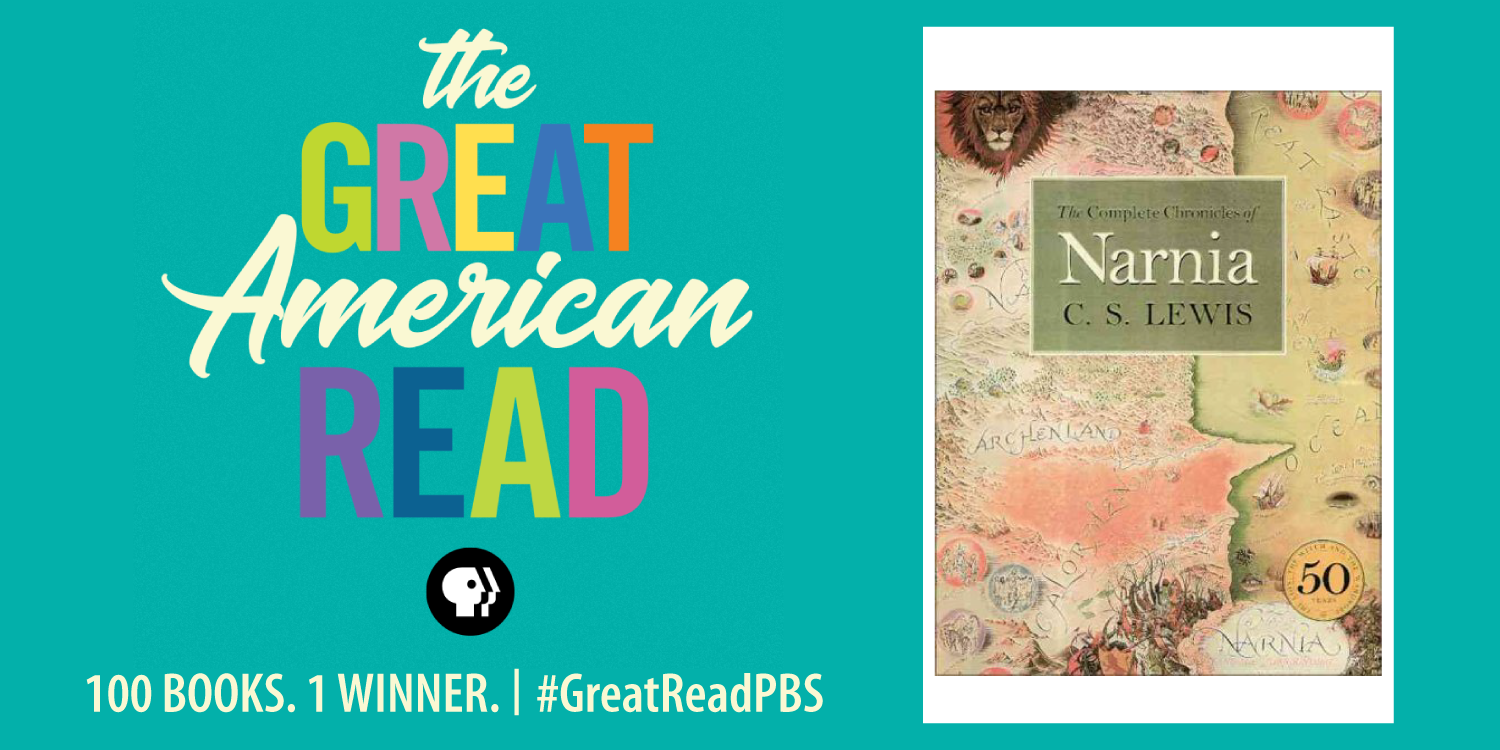The Great American Read is a new eight-part series from PBS that explores and celebrates the power of reading, told through America’s 100 best-loved novels. Join the conversation with PBS and WUCF!
Read the list of 100 books.
Vote for your favorite.
Share your love of reading using #GreatReadPBS.
The series returns to WUCF on September 11 at 8 p.m.
For more information and to vote, visit pbs.org/greatamericanread.
As I was raised in an a-religious Canadian household, the overtly Christian themes of The Chronicles of Narnia were completely lost on me. All I knew was it had closets with magic portals, talking animals, ice witches eating Turkish delight—whatever the hell that was, and epic adventures where kids were at the helm and adults were womp-womping in the background like the teacher from the Peanuts comics. In fact, I read them so religiously (har har) that I regularly had to tape them back together again because the spines fell apart. Because I’m an extreme reader, like, I get really into it and punch those books in the face.
Side Note: I’m not going to bring up the movies, but I’m thankful to them for introducing me to Ben Barnes and James “I’m rocking this goat bottom and red scarf combo” McAvoy.
C.S. Lewis mishmashed Greek and Roman mythology with British fairy tales and Bible-bologna together to create a classic allegorical children’s series that’s sold 100 million copies, a combo that despite the aforementioned dead horse-beating Christian messaging, is ultimately a completely bangarang look at a generational fight of good versus evil.
While Lewis seems to enjoy a deified popularity in America akin to Thomas Kinkade – he’s featured on a church’s stained-glass window somewhere in California – in the United Kingdom he’s kind of an embarrassing joke. Like a crazy uncle who happened to do something really popular in his prime but ultimately just drinks to much at Christmas and spends the evening farting in the corner. But since the Brits exist in a perpetual state of embarrassment and under-the-breath-apology-muttering, who cares. His lite-American sainthood is rooted in his successful juxtaposition of dogmatized faith with a film of childhood wonderment and fantasy. The literary equivalent of a Christian twinkie; found in every gas station and tucked lovingly into your kid’s lunch before shoving them off to school.
The books all have something different and episodic to lean into, which is why I liked revisiting them so much as a wee me. While The Lion, the Witch, and the Wardrobe (heretofore referred to as “El Dub Dubs”), Prince Caspian, The Voyage of the Dawn Treader and The Silver Chair all have recurring characters that follow a familiar arc (because only kids can come to Narnia and you’re kicked out if you put on lipstick and nylons – poor Susan), standalones like The Horse and His Boy and The Magician’s Nephew could be devoured in one sitting at summer camp and you wouldn’t have to know anything about the Pevensies and their exhausting White Burden to save the world while wearing a crown.
Philip Pullman, the author of His Dark Materials, another amazing series I spooned when I was a kid, absolutely hated Narnia and called it “ugly” and “poisonous.” But he hated Jesus, so that’s his own carry-on baggage. Tolkien wasn’t a fan either, but that’s because his stuff wasn’t as family-friendly and didn’t sell as well.
Now while I freaking love this series, I’m still confused about what Aslan said to Edmund up in the mountains that made him into a Stepford Cuckoo version of himself, post-lion resurrection party. Like, that kid was the worst, so what did that Jesus lion do to him?
And why wasn’t Susan on the train that killed all of the Super Friends of Narnia in The Last Battle, the Thor: Ragnarok of the series?
As an out gay man, you’d be hard-pressed to see me willingly hop back into a closet, but I’m going to have to pick up those books again and I’ll probably need some more tape to hold them together.
| Brendan O’Connor is a transplanted Canadian that graduated from Rollins College with a degree in Environmental and Growth Management Studies and then never found his way back North. During the day, O’Connor helms Bungalower Media, a hyper-local media company that focuses on Orlando’s downtown “bungalow” neighborhoods. You can watch him on FOX 35’s Good Day Extra every Monday morning, hear him on Real Radio’s Bungalower and the Bus or The Jim Colbert Show, or read his work on bungalower.com or in their monthly print ‘zine, not to mention on social media, @orlandobungalower. |
Content written by guest bloggers do not necessarily reflect the views and opinions of OCLS and its staff.

